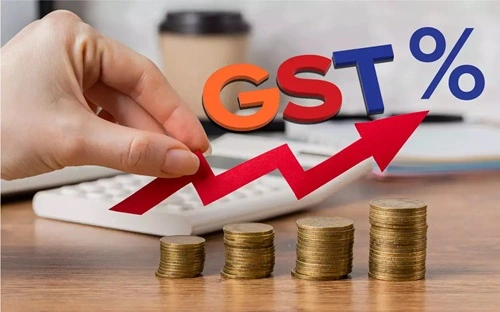The Goods and Services Tax (GST) Council of India is poised to clarify the applicability of a 5% GST on delivery charges levied by food delivery platforms such as Zomato and Swiggy, with a retrospective effect from 2022.
Background: GST on Food Delivery Services
In January 2022, the GST Council mandated that food delivery platforms collect and remit a 5% GST on restaurant services provided through their platforms. This move aimed to streamline tax collection and curb evasion by ensuring that the tax was collected at the point of delivery.
Current Issue: Delivery Charges Under Scrutiny
While the 5% GST on food items delivered via these platforms was established, ambiguity persisted regarding the tax rate applicable to delivery charges. GST authorities have recently raised concerns, suggesting that delivery charges should attract an 18% GST, leading to significant tax demands on these platforms.
GST Council’s Proposal: Retrospective 5% Levy

To address this ambiguity, the GST Council is expected to clarify that a 5% GST rate applies to delivery charges,ectively from 2022. This decision is anticipated to create a tax liability for food delivery platforms, as collecting taxes on past transactions may pose challenges.
Implications for Food Delivery Platforms
The retrospective application of the 5% GST on delivery charges could have several implications for platforms like Zom
- Financial Liability: These platforms may face substantial tax liabilities for the period dating back to 2022, necessitating adjustments in their financial statements and potential outflows to settle dues.
- Operational Adjustments: To comply with the clarified tax norms, platforms might need to update their billing systems to ensure accurate tax collection on delivery charges moving forward.
Impact on Consumers
For consumers, the clarification is unlikely to result in a significant increase in costs. Delivery charges constitute a small fraction of the total order value, and the application of a 5% GST is expected to have a minimal impact on the final bill.
Broader Taxation Context
This development is part of a broader effort by the GST Council to address ambiguities and ensure clarity in tax regulations across va By standardizing tax rates and their applicability, the Council aims to enhance compliance and reduce disputes arising from interpretational differences.
Conclusion
The GST Council’s anticipated clarification on the retrospective application of a 5% GST on food delivery charges seeks to resolve existing ambiguities and ensure uniform tax treatment across the food delivery ecosystem. While this move may introduce certain financial and operational challenges for platforms like Zomato and Swiggy, it underscores the Council’s commitment to maintaining a transparent and consistent taxation framework.